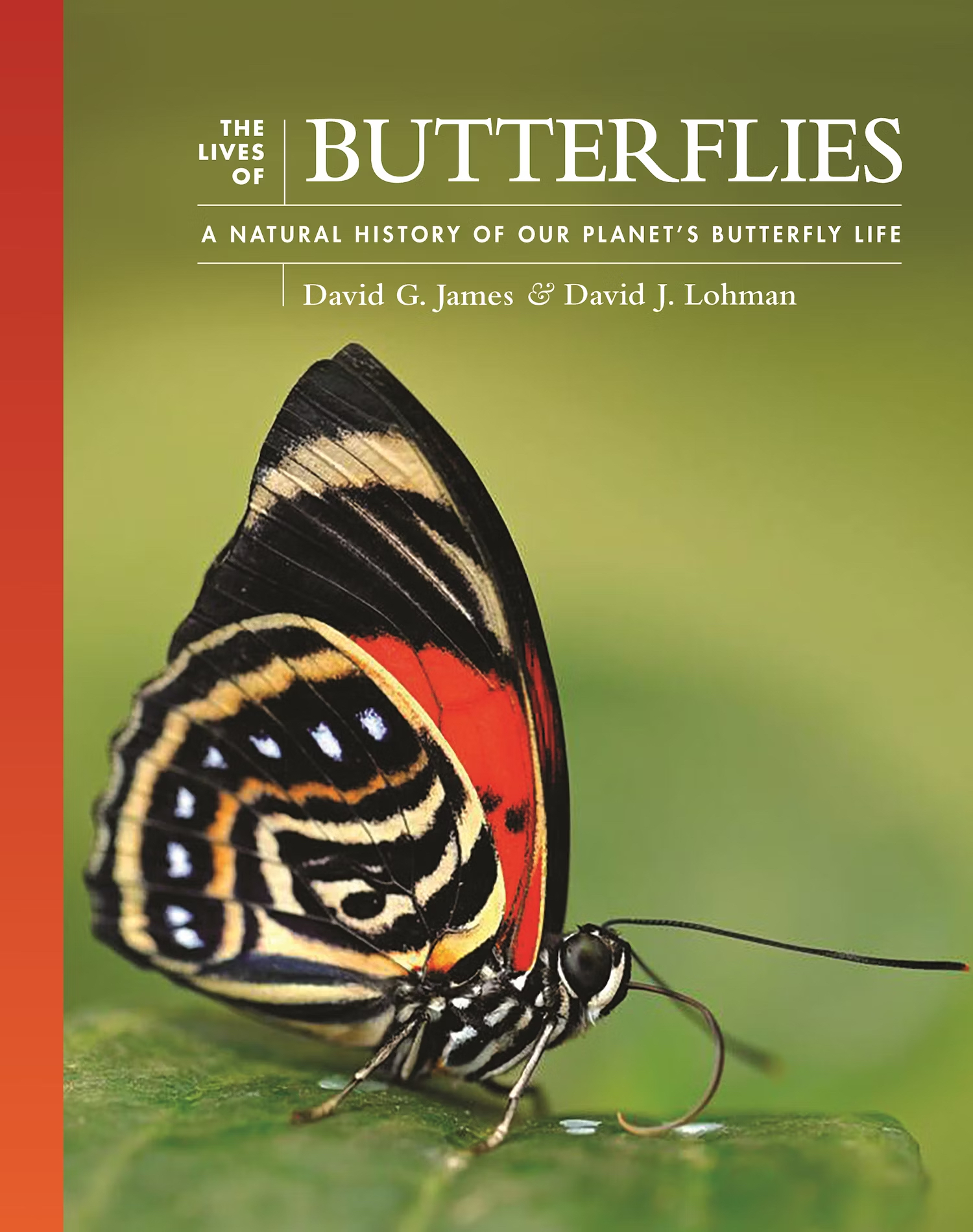David G. James and David L. Lohman
Princeton University Press
2023
ISBN: 9780691240565
Reviewed by Richard Harrington
This is a butterfly-lover’s sweet shop or, should I say, candy store, bearing in mind that the authors are in the United States. Every page has razor-sharp, full-colour pictures of an amazing range of butterflies from around the world (mostly pristine, but why the tatty old Wall Brown?), chosen to illustrate points that the authors wish to make. For me, knowing the British butterflies so well, it was with excited anticipation that I turned each page to sample the magnificence of species with which I am less familiar, although a good number of British butterflies are included.
This is much more than a picture book, though. It summarises key aspects of butterfly lives in seven main chapters covering life histories, behaviour, habitats & resources, populations, seasonality, defence & natural enemies, and threats & conservation. It is a very basic introduction to these topics (e.g., ‘Young butterflies are called larvae, or caterpillars’) but nobody knows everything about butterflies, and even experts will inevitably find some facts of which there were unaware. In my case, these include larvae of the genera Allotinus, Miletus and Feniseca (all Lycaenidae) eating aphids, on which I am supposed to be an expert. Some butterflies get their salt from crocodile tears, literally. Males of my favourite genus, Parnassius (the Apollos) secrete a ‘chastity belt’ or sphragis, to ensure that their sperm will fertilise their mates’ eggs. Pupae of Leona’s Little Blue (Philotiella leona), one of the world’s rarest butterflies, lie on exposed sandy surfaces of the Antelope Desert in south-central Oregon and survive average daily temperatures ranging from 0 to 70oC. Painted Lady (Vanessa cardui) larvae will eat soybean; I thought they only ate thistles. The complex ‘dual mimicry’ shown by the Common Palmfly (Elymnias hypermnestra) and the combined Batesian and Müllerian mimicry of Marshall’s Acraea Mimic (Mimacraea marshalli) are truly incredible. Apparently, we know virtually nothing about the pathogens of adult butterflies; surely there must be some PhD projects in that. And so on.
The very first sentence in the book might be considered by some to be controversial: ‘Butterflies are a subgroup of moths …’ The inclusion of the Hedylidae, or moth-like butterflies found only in Central and South America, which fly at night and lack swollen antennal tips, goes some way to justifying this statement. The summary of butterfly families, including the number of species in each, is useful. Perhaps oddly, it’s presented twice, in the Life Histories chapter and at the back. Certainly oddly, the first says that the Nymphalidae has 12 subfamilies, the second, 13, although the latter appears to be a misprint as only 12 are listed. So, who is the book for? The writing is aimed at those who appreciate the beauty of butterflies and would benefit from an introduction to their life stories. As I have said, though, even experts will find something new and get a fix from the magnificent photographs. It’s a beautifully produced book and would make a lovely present. Roll on summer.


